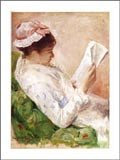 Beautiful Wreck by Larissa Brown
Beautiful Wreck by Larissa BrownMy rating: 5 of 5 stars
"as though we'd run out of original things to be..."
Historic reenactments are no longer hobbies for the few in 22nd-century Iceland, where all now pursue their favorite eras in costume, interacting only in the recreated past. Jen, a young linguist, brings her expertise in Old Norse language and gestures to a bold, new, fully-realized Viking longhouse scenario in a full-sensory sim "tank," where participants will be immersed in their beloved era, "minus the messy beauty of a real farm, the stink of animals and work of many hands." After they leave the tank, they will re-enter the city, where the only birds left in this dystopia are crows, and the sky glimpsed only between tall, tall buildings.
Jen's translation of a Viking woman's diary has given her a glimpse into the reality of one farmer's wife, whose sensibility seems, to Jen, more modern than most of her time. "The sky was big today, all ice and violet," wrote this woman, who also penned a lullaby to "woods and whales and sea. Goodnight to the circle of young girls, their long braids lit by fire..."
Jen's familiarity with the language and lore gives her enough of an edge to survive when the sim tank malfunctions and flings her onto a black beach, half-in and half-out of a freezing sea, half-conscious and half-aware of the song of a whale. Rescued by two Viking men whose stinking breath shocks her ("a breakthrough in the design quality"), she begins to understand that she is not dreaming -- she truly is living the life that most of her countrymen long for. She has been transported through time.
Most of the novel takes place in that very real past, where Jen (now called Ginn) becomes a member of a clan in a longhouse ruled by a young chieftan, Heirik. His fearsome birthmark represents mystery and power to his people, but Ginn learns the facts behind the lore that has defined him. She falls deeply in love. Heirik's reluctance to love becomes clearer as Ginn's immersion in this new life becomes deeper and more dear.
The reader learns about the dynamics of the varied, gritty, loving clan members as their stories intertwine, clash, and mesh. Larissa Brown's scholarship is worn lightly. The Vikings feud, gather, and love against history and folklore, like the runes, cables, and braids of Viking design. Each character and plotline is deep and real, especially those of the the displaced, beached Ginn and the women she joins in the chores, sorrows, and dreams they share.
Readers who are fiber enthusiasts will be delighted as Ginn masters the art of the spindle from the accomplished Hildur: "she showed me how the thread was forming, how to feed the fiber, like spun sugar in my hands." Images of whiteness form the background of the story: white fleeces, like the clouds that the Norse goddess Grigg spins, the white snow that piles high outside the longhouse, the snowblooms that are harvested to make mouthwash, and the disorienting whiteout that nearly costs Ginn her life. Against this whiteness are golden vistas, green swaths, and the immense blue sky.
I was as immersed in this wonderful novel as a 22nd-century Icelander would have been in the sim tank. As a modern woman, I wanted to cut through the myths and hesitations so that the characters could live their dreams, love whom they wished, and thrive. As a modern reader, I was satisfied with the way the stories unfolded, and happy with the vivid, engrossing, well-written story. Larissa Brown has taken elements of romance, history, and science fiction, and blended them into something new, vivid, and wonderful.
(Note: I was given an ARC to review. I will definitely reread the published novel - it's that good!)
View all my reviews

